inside
• Ways to fight indigestion
• Natural immune support
• Blood sugar control


• Ways to fight indigestion
• Natural immune support
• Blood sugar control


To B12 or not to B12 isn’t a question: If you’re at risk for deficiency, you’ll want to be sure you’re getting enough of this essential vitamin through diet or supplements.
Important in keeping nerve cells healthy, B12 helps the body produce DNA and works with other B vitamins in the production of red blood cells and the immunity- and mood-boosting compound SAMe. It’s been used in the treatment or prevention of pernicious anemia, heart disease, macular degeneration, and fatigue.
Who’s at risk? Our bodies can store several years’ worth of B12 in the liver, and healthy people under 50 who eat a varied diet usually get enough of the vitamin through food sources. It’s found in meat, poultry, fish, eggs, and dairy products, but not in plant foods, so vegans and some vegetarians need supplemental B12. Others who may want to get their daily dose through a supplement or fortified cereal include people over 50, who are more likely to have problems absorbing the vitamin from food sources; people with conditions that inhibit the absorption of nutrients, like Crohn’s disease and pancreatic disease; and people who have had weight-loss surgery.
Even in large doses, B12 has been found to have no adverse effects, so no upper limit has been set for it. Still, it’s always important to talk with your healthcare provider about supplementation. ●





While it may look a little bleak outside—with bare branches, clouds, and rain at times—inside many homes cheerful Thanksgiving prep is under way.
In advance of the holiday, try out a new pecan pie recipe—the one on page 5 features maple, a delicious pairing with nuts. And for a quartet of yummy mocktails, see page 26.
Our November food feature is all about Thanksgiving dinner. Beginning on page 12 you’ll find recipes for everything from soup to cornbread, with the turkey and stuffing taking center stage.
That feast may lead you to indigestion, but we have four steps to dealing with it from certified nutritionist Sally Karlovitz (page 17). Besides eating slowly and chewing thoroughly to stop indigestion before it begins, Sally suggests enzymes, calcium carbonate (a natural antacid), and probiotics to deal with digestive issues.
Probiotics also help immunity by keeping bacterial and viral causes of illness from taking hold. Add stress-reduction, core vitamins and minerals, and herbal immunity boosters to your regimen to get you through winter with a strong immune system (page 24).
For those who suffer from seasonal affective disorder, which arrives like a thundercloud with the shorter daylight hours, we have suggestions to ease symptoms (page 20). Our health feature this month covers everything you need to know about metabolic syndrome and blood sugar (page 22).
And to round out our food coverage, we offer tips for healthy, satisfying lunches (page 18) and a look at the health benefits of garlic, whose powers are nutritive as well as culinary (page 28).
Happy Thanksgiving to you and those you love—

Contributing Writers
Mary Ann O’Dell MS, RDN
Sally Karlovitz CN
Chief Content Officer and Strategist Lynn Tryba (Lynn.Tryba@TasteforLife.com)
Contributing Editors
Lisa Fabian, Rich Wallace
Associate Editor
Kelli Ann Wilson
Creative Director
Michelle Knapp
Custom Graphics Manager
Donna Sweeney
Chief Operating Officer
Amy Pierce
Customer Service 800-677-8847
CustomerService@TasteforLife.com
Client Services Director - Retail Judy Gagne (x128)
Client Services Director - Advertising & Digital Ashley Dunk (x190)
Vice President – Retail Sales and Strategic Partnerships
Anna Johnston (Anna.Johnston@TasteforLife.com)
Chairman and Founder T. James Connell
Taste for Life® (ISSN 1521-2904) is published monthly by CCI, 155 Washington Street, Keene NH 03431, 603-283-0034 (fax 603-676-7941); © 2024 Connell Communications, Inc. All rights reserved. Subscription rates: $29.95. This magazine is not intended to provide medical advice on personal health conditions, nor to replace recommendations made by health professionals. The opinions expressed by contributors and sources quoted in articles are not necessarily those of the editor or the publisher. Advertisers and advertising agencies assume liability for all content of advertising and for any claims arising therefrom. Information appearing in Taste for Life may not be reproduced in whole or in part without express permission of the publisher.
Creative and Sales Offices 155 Washington Street, Keene NH 03431 603-283-0034




Mary Ann O’Dell, MS, RDN
From The Perfect Pie by America’s Test Kitchen ($35, America’s Test Kitchen, 2019)
1 recipe Single-Crust Pie Dough (recipe follows)
4 Tbsp unsalted butter, cut into 1-inch pieces
½ c granulated sugar
½ tsp table salt
3 large eggs
1 c maple syrup
1½ cups pecans, toasted and chopped fine
1. Roll dough into a 12-inch circle on a floured counter. Loosely roll dough around a rolling pin and gently unroll it onto a 9-inch pie plate, letting excess dough hang over edge. Ease dough into plate by gently lifting edge of dough with your hand while pressing into plate bottom with your other hand. Trim overhang to ½ inch beyond lip of plate. Tuck overhang under itself; folded edge should be flush with edge of plate. Crimp dough evenly around edge of plate. Wrap dough-lined plate loosely in plastic wrap and refrigerate until firm, about 30 minutes. Adjust oven rack to lowest position and heat oven to 425°.
2. Line chilled pie shell with a double layer of aluminum foil, covering edges to prevent burning, and fill with pie weights. Bake on a foil-lined rimmed baking sheet until pie dough looks dry and is pale in color, about 15 minutes. Remove foil and weights, rotate sheet, and continue to bake until crust is

2 hrs prep time + 4 hrs cool time serves 8
light golden brown, 4 to 7 minutes longer. Transfer sheet to a wire rack. (Crust must still be warm when filling is added.)
3. While crust is baking, melt butter in a heatproof bowl set over a saucepan filled with 1 inch of barely simmering water, making sure that water does not touch bottom of bowl. Off heat, stir in sugar and salt until butter is absorbed.
4. Whisk in eggs and then maple syrup until smooth. Return bowl to saucepan and stir until mixture is shiny, hot to touch, and registers 130°. Off heat, stir in pecans.
5. As soon as pie crust comes out of oven, adjust an oven rack to the lowermiddle position and reduce oven temperature to 275°. With pie still on sheet, pour pecan mixture into warm crust.
6. Bake until filling looks set but yields like gelatin when gently pressed with the back of a spoon, 50 minutes to 1 hour, rotating sheet halfway through baking. Let pie cool completely on wire rack, about 4 hours. Serve.
Per serving: 557 Calories, 6 g Protein, 113 mg Cholesterol, 58 g Carbohydrates, 39 g Total sugars (38 g Added sugars), 2 g Fiber, 35 g Total fat (14 g sat), 308 mg Sodium, ★★★★ Vitamin B2 (riboflavin), ★★ Vitamin A, ★ Vitamin B1 (thiamine), Phosphorus, Zinc
From The Perfect Pie by America’s Test Kitchen ($35, America’s Test Kitchen, 2019)
10 Tbsp unsalted butter, chilled, divided 1¼ c (6¼ oz) all-purpose flour, divided 1 Tbsp sugar ½ tsp table salt ¼ c ice water, divided
1. Grate 2 tablespoons of the butter on the large holes of a box grater and place in the freezer. Cut remaining 8 tablespoons butter into ½-inch cubes.
30 min prep time + 2 hrs chill time makes one 9-inch single crust
2. Pulse ¾ cup of the flour, the sugar, and salt in a food processor until combined, 2 pulses. Add cubed butter and process until homogeneous paste forms, about 30 seconds. Using your hands, carefully break paste into 2-inch chunks and redistribute evenly around processor blade. Add the remaining ½ cup flour and pulse until mixture is broken into pieces no larger than 1 inch (most pieces will be much smaller), 4 to 5 pulses. Transfer mixture to a bowl. Add grated butter and toss until butter pieces are separated and coated with flour.
3. Sprinkle 2 tablespoons ice water over mixture. Toss with a rubber spatula until mixture is evenly moistened. Sprinkle remaining 2 tablespoons ice water over mixture and toss to combine. Press dough with spatula until dough sticks together. Transfer dough to a sheet of plastic wrap. Draw edges of plastic over dough and press firmly on sides and top to form compact, fissure-free mass. Wrap in plastic and form into a 5-inch disk. Refrigerate dough for at least 2 hours or up to 2 days. Let chilled dough sit on counter to soften slightly, about 10 minutes, before rolling. (Wrapped dough can be frozen for up to 1 month. If frozen, let dough thaw completely on counter before rolling.)
Adding a spoonful of honey to yogurt boosts its probiotic effects, according to a pair of new studies. The honey appears to help the yogurt’s beneficial bacteria survive in the gut.
“However, we have to keep in mind that honey is an added sugar, and most Americans need to be cognizant of the amount of sugar in their diet to maintain a healthy body weight,” said researcher Hannah Holscher, PhD. “But adding a little bit of honey to unsweetened yogurt is a nice culinary pairing to incorporate into your menu rotation.”
SELECTED SOURCES “Honey added to yogurt supports probiotic cultures for digestive health,” University of Illinois College of Agricultural, Consumer and Environmental Sciences, 8/5/24 • “Honey added to yogurt with Bifidobacterium animalis subsp. lactis DN-173 010/CNCM I-2494 su probiotic enrichment but does not reduce intestinal transit tim healthy adults . . .” by A.R. Mysonhimer et al., 8/24; “Honey varietals differentially impact Bifidobacterium animalis ssp. lactis surviv yogurt through simulated in vitro digestion” by D.A. Alvarado et al., 3/24, Journal of Nutrition


A plant-based diet that includes fish scored well for preventing neurological problems in elderly adults. The study found that the benefits of a vegetarian diet for lowering risks of stroke, dementia, and Parkinson’s disease were reduced in people in their 80s. Adding fish provided “a noticeable advantage,” according to the authors.
“These increased risks of neurological conditions among vegetarians in their 80s weren’t huge, but something is going on there that we shouldn’t ignore if we wish the vegetarian advantage to continue for all vegetarians in their later years,” said lead researcher Gary Fraser, PhD.
SELECTED SOURCES “Cause-specific and all-cause mortalities in vegetarian compared with those in nonvegetarian participants from the Adventist Health Study-2 cohort” by G.P. Abris et al., American Journal of Clinical Nutrition, 8/2/24 • “Pesco-vegetarian diets best for reducing risk of death in elderly,” Loma Linda University Adventist Health Sciences Center, 8/23/24
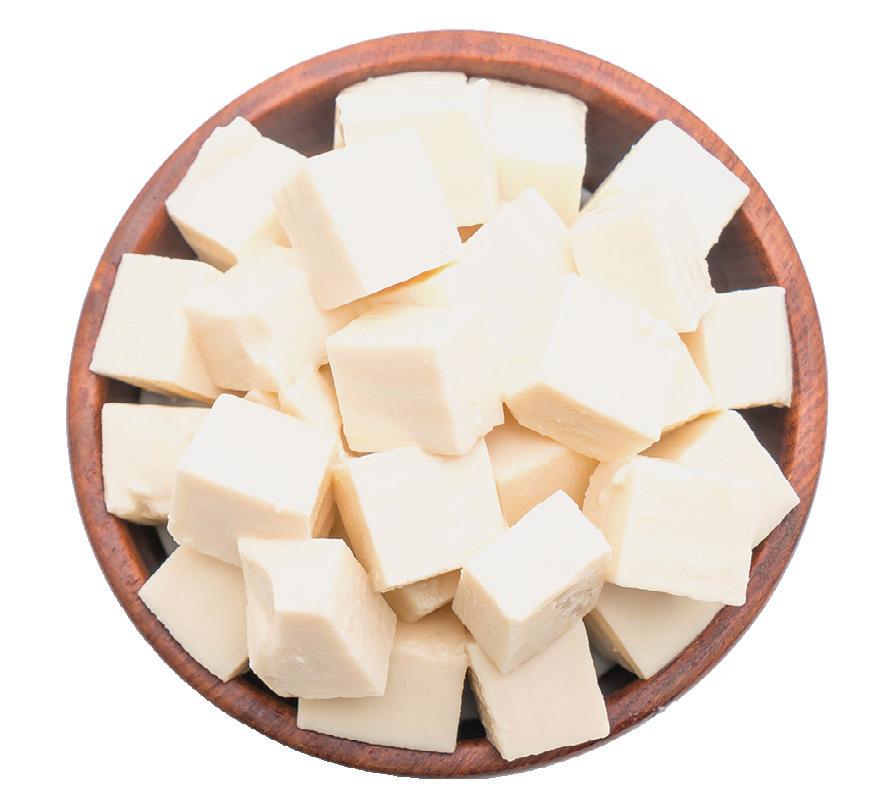
Wondering what to do with tofu? Also known as bean curd, this soy food comes in several consistencies. Nutritionists at Tufts University have these suggestions for incorporating it into your meal plan.
n Use silken tofu in soups, and firm tofu for grilling.
n Add spices when using tofu as a main dish, or allow it to absorb the flavors of whatever you’re cooking with it.
n Try tofu as a meat substitute or blend it into a sauce.
n Gently squeeze the water out of a block of tofu to make cooking with it easier.
SOURCE “Tofu is terrific!,” Tufts University Health & Nutrition Letter, 9/24
New research published in the American Journal of Clinical Nutrition links magnesium deficiency to a higher risk of kidney disease. The good news: This mineral is abundant in many foods.
Cleveland Clinic nutritionist Anna Taylor, RD, recommends magnesium-rich nuts and seeds, legumes, whole grains, leafy greens, and a wide variety of fruits and vegetables, including avocados, bananas, and potatoes. (Dark chocolate is another surprising choice.)
“You’re not just getting magnesium from these foods,” Taylor said. “You’re also getting so many fantastic nutrients, such as vitamins, other minerals, and phytonutrients that can benefit your body in so many different ways.”
SELECTED SOURCES “25 magnesium-rich foods you should be eating,” Cleveland Clinic, https://health.ClevelandClinic. org, 3/17/23 • “Association between dietary magnesium intake and incident chronic kidney disease: A prospective observational cohort study” by H.B. Koh et al., American Journal of Clinical Nutrition, 8/17/24

This portable bar doubles as a massage tool and a lotion, offering an all-natural way to help your body relax while softening your skin. Massage the cube on your skin until the desired amount of oil is released. Use the cube to work into those sore muscles and joints, concentrating on the painful and swollen areas.
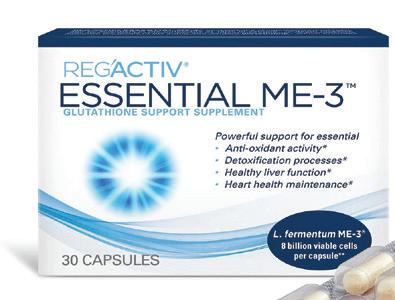
This novel glutathione support supplement contains the glutathione boosting probiotic Lactobacillus fermentum ME-3, a probiotic proven to cost-effectively increase glutathione levels.* It releases glutathione directly into the intestines, bypassing normal digestive breakdown and ensuring availability of more glutathione to the body.*

Get what you need from a convenient daily multi, plus ashwagandha and B vitamins to support stress management.* It supports a positive, calm mood and a healthy cortisol response.* This fermented liposomal multivitamin offers enhanced nutrient absorption with probiotics to promote healthy digestion.*

Cool occasional heartburn and help relieve indigestion with this quicker acting chewable formula.* It contains acid-neutralizing minerals, plus soothing and calming botanicals including aloe vera, chamomile, marshmallow, and licorice. It’s a popular choice when you occasionally overindulge.*

Wild Turkish lavender oil is combined with pure olive oil for a concentrated, highly aromatic topical remedy. Use it to support a healthy nervous system response, healthy sleep, and vital skin.* Use in a diffuser, or rub it on face, feet, chest or spine whenever there is need for relaxation. You can also add it to liquid soap or shampoo.

PEA (palmitoylethanolamide) is a compound known for its support of pain relief, healthy mood, cognitive function and exercise recovery.* The proteolytic enzyme, Serratiopeptidase, may help support muscle recovery, joint flexibility and comfort.* Together they combine for wide-spectrum support to help you stay active.*
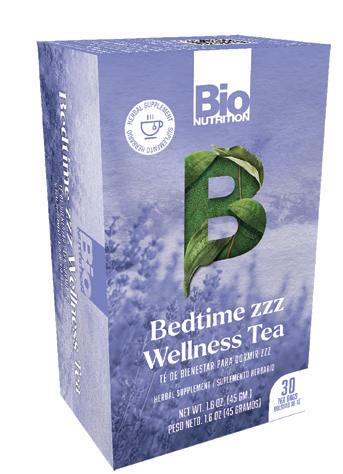
Ease your way into nighttime rest with this herbal caffeine-free tea.* It’s made from synergistic herbs sourced from ethical and responsible growers, offering a delicious tasting experience to promote a restful night’s sleep.* Includes lavender, passionflower, ashwagandha, chamomile, and other support herbs.
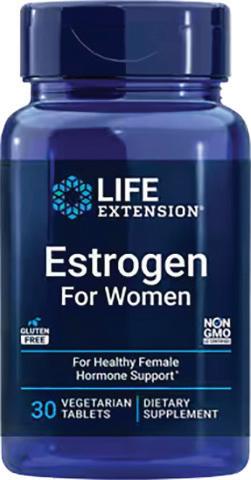
This plant-based formula contains Norway spruce lignans which help provide relief from common menopausal discomforts, including hot flashes and night sweats.* It delivers soy isoflavones and other botanicals to support women’s health, such as lignans, broccoli, chasteberry, and dong quai extracts, all in just a single tablet.
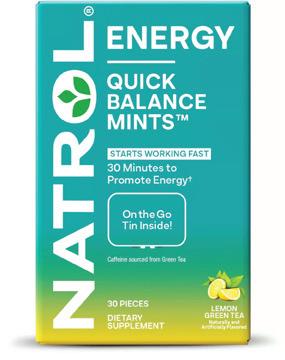
Boost energy naturally with this energy supplement that is easy and convenient for life on the go.* In just 30 minutes, these fast-working energy mint supplements promote concentration and increased energy when you need it.* Each lemon green tea flavored mint supplies 35 mg caffeine sourced naturally from green tea.

This ecofriendly omega supplement provides the same essential fatty acids as fish oil, but from plants instead of fish! It’s derived from algae where fish get their omega 3s, making it a potent and more sustainable source of EPA and DHA. Plus, no fishy aftertaste! Each serving provides 770 mg omega-3 fatty acids.

Get deeper sleep and support mental well-being with this unique formula, featuring Maizinol, a clinically supported, melatonin-free compound.* The unique blend of proprietary, standardized natural compounds in this formula effectively bind to melatonin receptors, mimicking melatonin’s sleep-enhancing effects without the melatonin.*

Take care of your aging dog with multisystem support to help them maintain their overall health, joint mobility and vitality. It’s made with a tasty turkey protein base plus 19 human-grade support ingredients. Just mix into dog’s food – suitable for all breeds.







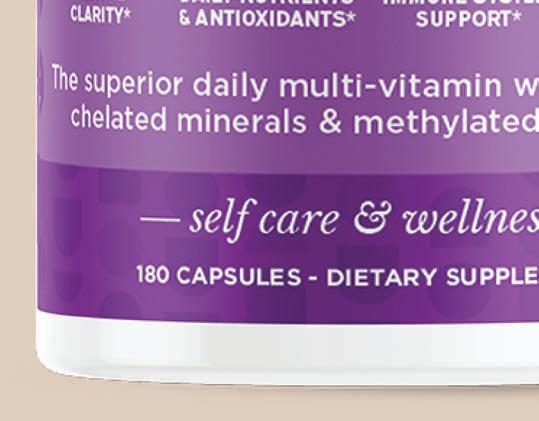












“Regularly add collagen to your diet.” Why?
When it comes to feeling good and looking good, I am going to share my secret weapon… it is called Total Body Collagen™. Collagen hydrates our skin, reducing wrinkles and giving us that plump youthful glow. It also supports healthy hair.
– JULIE REIL , MD and Beauty Expert







BY LISA FABIAN

© PATRICIA NIVEN

From Seasons Around the Table: Effortless Entertaining with Floral Tablescapes & Seasonal Recipes by Jessie-Sierra Ross ($35.99, Schiffer Publishing, 2024)
For the Brine
2 heads garlic
12 c water
1 c coarse kosher salt
½ c brown sugar
6 sprigs fresh thyme
6 sprigs fresh rosemary
3 dried bay leaves
1 Tbsp whole black peppercorns
1 tsp red pepper flakes
½ tsp dried sage
4 c plain apple cider or unsweetened apple juice
For the Roasted Turkey
1 brined turkey (use an 18-lb turkey for 12 servings)
2–3 apples (to fill bird cavity)
2–3 yellow onions (to fill bird cavity) avocado oil or butter for coating
Special Equipment
3- to 5-gallon stock pot
1 or 2 meat thermometers
1. Slice garlic heads around their circumferences. Add garlic heads to a large stockpot, along with all brining ingredients except apple cider. Place over mediumhigh heat and boil until salt and sugar have completely dissolved. Stir occasionally.
2. Once salt and sugar have dissolved, remove from heat. Add apple cider and mix. Let brine come to room temperature and then chill in the refrigerator until cold.
3. Once brine is chilled, use it to brine turkey. If turkey is less than 18 pounds, it should fit in a 4- or 5-gallon stockpot, and you can brine it directly in pot. Otherwise, you may need a brining bag.
4. Make sure turkey is completely thawed, the neck and bag of gizzards are removed, and turkey has been thoroughly rinsed inside and outside.
5. Into stockpot or brining bag, scoop or pour brining mix so it covers top of turkey. Be sure cavity of turkey is not blocked at the bottom and is being filled as well.
6. After filling, cover stockpot (or tie top of brining bag securely).
7. Let turkey brine in the refrigerator for 24 to 48 hours.
8. When ready to roast, remove turkey from brine, rinse in the sink, and wipe dry with paper towels. Discard brine.
For the Roasted Turkey
1. Place rinsed and dried turkey in a roasting pan and stuff turkey cavity with quartered apples and onions (these are not to eat, so you can keep skins on onions). The purpose is to occupy space inside turkey to prevent it from drying out. The apples and onions block hot oven air from heating inside of bird, allowing it to cook more evenly.
2. Prop turkey up on its wings, folding them under back of bird, so it looks as though it will rest on its “elbows.” This will keep rest of meat far away from any juices that come out of bird while cooking.
3. Coat outside of turkey with vegetable or avocado oil. You can just pour some on top and rub it around with your hands. This helps with browning. You can use a butter coating as well, but high-temperaturesafe oils like avocado oil brown turkey beautifully.
4. Roast turkey at 400° until it reaches 15° below the safe final temperature of 165°. Turkey will continue to cook once it’s removed from oven. Cover turkey with foil out of the oven, and keep thermometer in turkey to ensure final temperature reaches 165°.
5. Once turkey reaches 165°, let it stand at least 30 minutes. Slice and enjoy!
Kitchen Note: Brining the turkey before roasting truly makes all the difference. Start brining one to two days before Thanksgiving dinner, so it has plenty of time to marinate. The mix of salt, spices, and aromatics adds flavor to the meat, but it also helps create that golden crispy skin after roasting. A combination of fresh herbs, garlic, and apple cider (or apple juice) infuses flavor into the turkey, and the results are always amazing.
Per serving: 287 Calories, 43 g Protein, 143 mg Cholesterol, 0 g Carbohydrates, 0 g Total sugars (0 g Added sugars), 0 g Fiber, 11 g Total fat (3 g sat), 223 mg Sodium, ★★★★★ Vitamin B3 (niacin), B12, Phosphorus, ★★★ Zinc, ★★ Vitamin B2 (riboflavin), ★ Magnesium
4½ hrs prep time + 2 days brining time serves 12
From Fruitful: Sweet and Savoury Fruit Recipes
Inspired by Farms, Orchards and Gardens by Sarah Johnson ($34.99, Kyle Books, 2024)
1 delicata squash*
Olive oil
1 large onion, diced
3 carrots, peeled and diced
Salt and black pepper
2 garlic cloves, diced
1 bay leaf
1 hr, 45 min prep time serves 4
2 sprigs sage, plus 3-4 stems for garnish (optional)
Pinch chili flakes
1¾ oz unsalted butter
1 apple, peeled, quartered, and cored 18–20 fl. oz. low-sodium vegetable or chicken stock
1. Preheat oven to 400°.
2. Slice squash in half and season flesh with salt and pepper. Drizzle with some olive oil and place halves, cut-side down, on a roasting tray. Roast in oven for 25 to 40 minutes, until skin becomes blistered and flesh turns tender throughout. Once done, remove from oven and allow to cool slightly.
3. In the meantime, take a large heavybased saucepan and add a drizzle of olive oil, along with onions and carrots. Sprinkle a pinch of salt over them and cook over a low heat with lid on for about 10 minutes until onions become translucent without browning. Stir in garlic, bay leaf, sage, and chili flakes, and then continue to cook for a further 10 minutes.
4. While vegetables cook, make brown butter. Place butter in a stainless-steelbased (or other light-colored) pan over a medium heat. Once butter has melted and starts to foam, gently swirl pan and scrape bottom where solids are beginning to settle. After a few minutes, butter will begin to color. Reduce heat so foam settles, and continue to cook until butter solids are hazelnut brown. Immediately transfer butter to a heatproof bowl and keep somewhere warm.
5. Once squash has cooled enough to handle, remove seeds and stringy core. Scoop out soft flesh and add it to pan
along with apple, stock, and half of brown butter. Set aside remaining brown butter for later. Increase heat to medium-high and bring everything to a boil. Reduce heat slightly and continue to simmer for about 20 minutes until apple is soft.
6. Remove pan from heat and discard bay leaf. Transfer one-third of soup to a blender and purée until smooth. Be careful when blending hot liquids, as pressure can build up and cause blender lid to come off unexpectedly. To avoid this, fill blender jug no more than halfway, and leave lid slighty ajar, allowing steam to escape. Placing a tea towel over the top will catch any potential splatters. Once soup is smooth, pour it into a large bowl and continue with the other two-thirds. Return blended soup to pan (it may require reheating). Taste and adjust seasoning to your preference.
7. If you wish to garnish soup with fried sage, take a small frying pan and pour in enough oil to cover the base. Place pan over medium-high heat. Set aside 12 sage leaves. Line a heatproof ceramic plate with a paper towel and keep it nearby. After a minute or two, test temperature of oil by adding a drop of water. If it sizzles, add sage leaves. Let them fry for around 2 to 3 seconds, and then turn off heat. Allow sage to fry for a few more seconds, and then transfer it to paper towel to drain. Season fried sage while it’s still hot and then let it cool.
8. When you are ready to serve, check to see if remaining brown butter is still melted. If not, gently warm it throughout. Ladle warm soup into bowls and swirl in spoonfuls of brown butter. Finish with freshly ground pepper and fried sage, if using.
*Delicata is a type of winter squash. This soup can also be made with butternut squash.
Per serving: 221 Calories, 2 g Protein, 27 mg Cholesterol, 26 g Carbohydrates, 8 g Total sugars (0 g Added sugars), 5 g Fiber, 14 g Total fat (7 g sat), 349 mg Sodium, ★★★★★ Vitamin A, ★★ Vitamin B6, C, ★ Vitamin B1 (thiamine), K, Magnesium, Phosphorus, Potassium
60 min prep time makes 12 pieces
From A Couple Cooks: 100 Recipes to Cook Together by Sonja Overhiser and Alex Overhiser ($40, Chronicle Books, 2024)
1½ c yellow cornmeal (medium grind or stone ground)
1 c all-purpose flour
¼ c packed light brown sugar
1½ tsp baking powder
½ tsp baking soda
1 tsp kosher salt
2 eggs
7 Tbsp unsalted butter, melted
1½ c buttermilk
Maple Glaze
1 Tbsp unsalted butter
¼ c maple syrup
¼ tsp cinnamon
1. Preheat oven to 375°. Grease a 9x9-inch baking dish.
2. In a medium bowl, stir together cornmeal, flour, brown sugar, baking powder, baking soda, and salt.
3. In a separate bowl, whisk together eggs, melted butter, and buttermilk. Add wet ingredients to dry ingredients and stir with a spatula until just combined.
4. Pour batter into prepared pan and smooth top evenly with a spatula. Bake until cornbread is puffed and golden and a toothpick comes out clean, 24 to 26 minutes. Remove from oven.
5. To make maple glaze: in a small saucepan, melt butter with maple syrup and cinnamon. Pour glaze over top of bread and brush it to evenly cover. Let it cool for at least 15 minutes, and then cut into pieces and serve.
Kitchen Note: The maple glaze seeps deeper into the cornbread the longer it sits, enhancing the flavor. It works well to make this dish in advance and bring it as a side dish to a dinner or a potluck. Refrigerated leftovers also work well reheated. Use medium grind cornmeal if possible; it lends a robust flavor and texture that’s preferable to fine ground. Store, covered, for 1 day at room temperature; thereafter it will keep, refrigerated, for up to 5 days, or freeze for up to 3 months. Reheat leftovers in a 350° oven until warmed through, 10 to 15 minutes.
Per serving (1 slice): 230 Calories, 4 g Protein, 48 mg Cholesterol, 33 g Carbohydrates, 9 g Total sugars (7 g Added sugars), 1 g Fiber, 9 g Total fat (5 g sat), 204 mg Sodium, ★ Vitamin B1 (thiamine), B2 (riboflavin), Calcium, Folate, Phosphorus

1½ hrs prep time serves 10
From Seasons Around the Table: Effortless Entertaining with Floral Tablescapes & Seasonal Recipes by Jessie-Sierra Ross ($35.99, Schiffer Publishing, 2024)
For the Bread Croutons
1 sourdough boule (slightly stale preferred!)
¼ c butter, melted
2 tsp garlic powder
2 tsp dried parsley
2 Tbsp olive oil
1 Tbsp Bell’s Seasoning (this is a poultry seasoning containing rosemary, oregano, sage, ginger, marjoram, thyme, and pepper)
Pinch kosher salt
Freshly ground black pepper
For the Stuffing
3 stalks celery, trimmed
2 large carrots, peeled
1 medium yellow onion, peeled
16 oz turkey breakfast sausage (uncooked)
2 cloves fresh garlic
1 Tbsp fresh sage, chopped
4 sprigs fresh thyme leaves, stems removed
1 sprig fresh rosemary, stems removed
1 c dried unsweetened cranberries
½–1 cup low-sodium chicken bone broth or rich turkey stock
1 Tbsp olive oil
Kosher salt
Freshly ground black pepper
To Make the Bread Croutons
1. Preheat oven to 375° and reserve a large baking tray.
2. Slice and cube bread into 1-inch cubes or hand-tear bread into bite-sized pieces. Add to a large mixing bowl.
3. Melt butter and mix with oil, and then add to bread. Toss to coat.
4. Sprinkle on seasoning and a generous pinch of kosher salt and pepper. Again, toss to coat.
5. Spread bread in a single layer on a large baking tray and place in oven for 10 minutes.
6. After 10 minutes, flip bread cubes over and bake for an additional 10 minutes.
7. Let cool.
To Make the Stuffing
1. Dice celery, carrots, and onion. Mince garlic and destem your herbs.
2. Set a large frying pan on high heat and add turkey sausage. As sausages cook, break them up into a crumble.
3. After fully cooking, set aside in a bowl but keep drippings in pan.
4. In same pan that you cooked sausages, add oil and reheat to medium-high heat.
5. Once hot, add vegetables, garlic, and herbs to pan. Add a generous pinch of salt and cook.
6. Stirring often, cook vegetables until slightly wilted, watching for overbrowning, about 5 to 7 minutes.
7. Next, add cranberries and cooked sausage to pan. Let cook for 3 minutes while stirring.
8. Remove pan from heat.
1. In a large bowl, mix together toasted bread cubes and cooked ingredients. Stir well with a large wooden spoon.
2. Grease a large casserole dish and add bread stuffing mixture. Spread into an even layer.
3. Pour stock or bone broth over top, but don’t mix again. It will spread out naturally. If you made dish earlier and refrigerated it, let it return to room temperature before baking.
4. Bake in a 375° oven for 25 minutes.
5. Remove from oven to a cooling rack.
Kitchen Note: Stuffing can be as varied as the regions it’s served in. From traditional oyster stuffing in New England to corn dressing from the South, what stays the same is the love put into it! For food safety, bake the stuffing outside the turkey. To bring back the extra flavor lost by not cooking the stuffing inside the bird, use a poultry bone broth to moisten the ingredients before baking.
Per serving: 305 Calories, 15 g Protein, 46 mg Cholesterol, 31 g Carbohydrates, 4 g Total sugars (0 g Added sugars), 3 g Fiber, 14 g Total fat (5 g sat), 584 mg Sodium, ★★★ Vitamin B1 (thiamine), B3 (niacin), ★★ Vitamin B2 (riboflavin), B6, B12, K, Folate, Phosphorus, ★ Vitamin A, Iron, Zinc

BY SALLY KARLOVITZ,

What is always found at family gatherings, sporting events, and holiday parties? Food! Food is something that should be enjoyed, but for the millions of Americans who struggle with digestive disorders, enjoying a big family meal or lots of little hors d’oeuvres can become uncomfortable. Problems associated with poor digestion and the digestive tract include indigestion, heartburn, nausea, gas, and bloating. While some try OTC medicines, these offer only temporary relief and can come with long-term negative effects. Natural remedies, on the other hand, can also offer tremendous relief, but work to address the underlying issues of digestion and gut support. Here are my top four steps to support digestion and fight indigestion naturally.
q Slow Down. This season, take time to enjoy the food and the company. Chew your food, which is the first step in digestion. This is a great time to truly savor the food and enjoy the company you are with.
r Take an All-Purpose Digestive Enzyme. Your body produces acids and enzymes that break down fats, carbohydrates, and proteins. As you age, these levels

Paragon Plus™ Super-Zyme™ Complex
Enzyme complex to support digestion.*
With pancreatic enzymes and betaine HCl to support digestion of fats, carbohydrates, and proteins.*
Enhanced with fenugreek for stomach and intestinal comfort.*
decline, leading to more digestive problems like gas and indigestion. Digestive aids with betaine HCl can help restore healthy stomach acid levels, which is essential for good digestion. Enzyme supplements also work by adding to the enzymes naturally being produced in the body, supporting and improving digestion, and reducing heartburn and bloating.
s Fight Acid Naturally. For those times when you do have a heartburn flare-up, calcium carbonate can help neutralize the acid and give quick relief. This mineral is effective for buffering the acid in the stomach and reducing irritation. It will not interfere with normal, essential gastric acid secretion like some over-thecounter antacid medications do.
t Use Probiotics. The friendly bacteria that live in the gastrointestinal (GI) tract of every person, probiotics encourage balance in the intestinal tract, and they are essential for the breakdown and assimilation of nutrients in the gut area.
Try these four steps to support overall digestive health and enjoy your next meal! ●

Akin’s Chewable Antacid
For occasional acid discomfort.*
With fast acting calcium and postassium carbonate to neutralize stomach acid.*
Plus DGL and soothing botanicals to support the gastrointestinal tract lining.*
Natural peppermint flavor.
Making your own lunch is a wonderful way to enjoy a satisfying, nutrient-dense midday meal, and it will save you money too. Although we usually think of sandwiches at lunchtime, eating a meal that isn’t breadbased may improve energy and digestion. Because it is high in refined carbohydrates, bread can spike blood sugar and contribute to insulin resistance over time.
An excellent alternative is a macro bowl, which is like a salad, but more filling and hearty. Macro bowls provide proteins, carbs, and healthy fats in a single serving. Another nice thing about macro bowls is that you can vary the ingredients weekly, so you never get bored!
To save time during busy weekdays, cook proteins and carbs over the weekend. Staples that work well include chicken thighs, meatballs, sweet potatoes, and roasted broccoli. Combining these prepped components with raw veggies and healthy fats creates balanced macro bowls.
Find a generously sized, lightweight, leak-proof container, and go macro! Here’s a foolproof formula to try.
✚ Start with a hearty serving of protein. For example: Several ounces

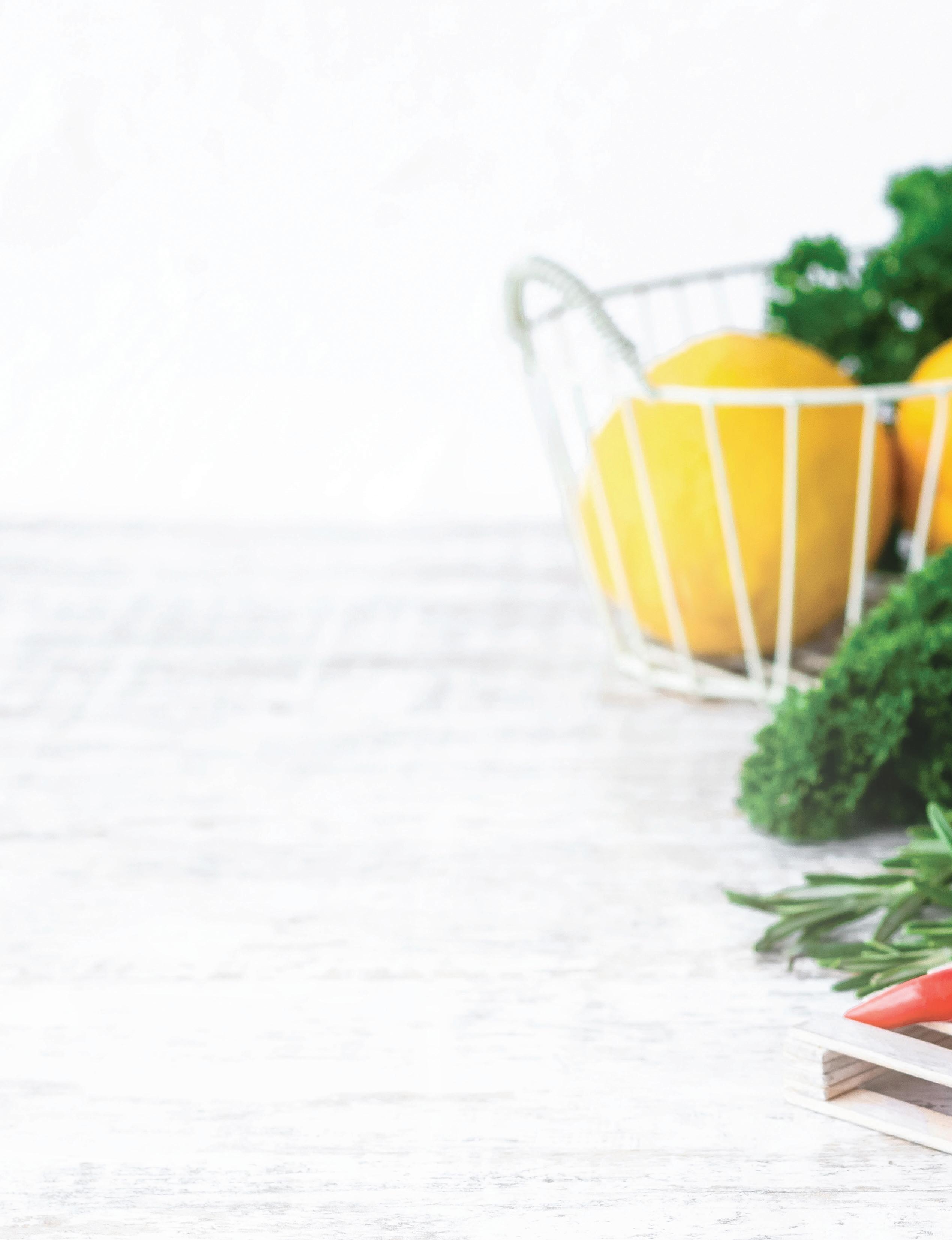
of roast chicken, leftover steak, meatloaf, canned salmon or tuna, hard-boiled eggs, cottage cheese, or hummus.
✚ Fill at least half of your lunch container with colorful nonstarchy vegetables such as lettuce, cucumber, tomato, carrots, celery, peppers, onions, broccoli, and cabbage.
✚ Add ½ cup of starchy carbohydrates or fruit. For example: baked sweet potato, baked butternut squash, homemade potato salad, wild rice, quinoa, beans, or an apple.
✚ Complete your bowl with a generous serving of healthy fats. For example: avocado, tahini, or olive oil-based dressings and sauces like vinaigrette and chimichurri.
For a drink, try coconut water. It’s rich in electrolytes and pleasantly sweet, and you can add a squeeze of lime juice for flavor. ●

Lili Hanft is a functional nutritional therapy practitioner. She works with clients to help them nourish their bodies, feel confident in the kitchen, and tailor their diets to their unique needs and health goals. Lili teaches virtual cooking classes focused on simple, nutrient-dense recipes and meal prep. Learn more at nutrientdensenourishment.wordpress.com and follow her on Instagram @nutrientdensenourishment.
• Chicken thighs, cubed baked sweet potatoes, roasted broccoli, and pesto
• Taco-seasoned ground beef, tomatoes, lettuce, rice, and guacamole
• Hard-boiled eggs, feta cheese, cucumbers, peppers, chickpeas, kalamata olives, and vinaigrette

5 min prep time makes approximately ² ⁄ ³ cup
From the Taste for Life test kitchen
¼ c extra-virgin olive oil
2 Tbsp red wine vinegar
1 small shallot, thinly sliced
2 garlic cloves, minced
1 Fresno chili, finely chopped
½ c coarsely chopped fresh flatleaf parsley
1 Tbsp finely chopped fresh oregano
½ tsp fine sea salt
1. Whisk oil, vinegar, shallot, garlic, chili, parsley, oregano, and salt together thoroughly in a small bowl. Serve over seafood, vegetables, potatoes, rice, or grilled meats.
Kitchen Note: Chimichurri is traditional Latin American herb sauce that can be used as a marinade for meats or drizzled over just about any dish—it’s perfect for adding a burst of flavor to your lunchtime macro bowl.
Per serving (2 tablespoons): 115 Calories, 1 g Protein, 4 g Carbohydrates, 1 g Fiber, 11 g Total fat (2 g sat), 106 mg Sodium, ★★★★★ Vitamin K, ★★ Vitamin C, ★ Vitamin E

As the days grow shorter, people who suffer from seasonal affective disorder, aka SAD, may start to experience the winter blues. While depression is a serious concern that should be treated by a medical professional, certain foods and supplements may also offer beneficial mental health support. Here are a few to consider.
Diminishing daylight hours means less vitamin D for people who depend on direct sunlight to get their daily dose. Low levels of vitamin D have been linked to depression, so boosting intake of this key vitamin may be in order during months when the sun rises late and sets early.
Vitamin D can be found in most multivitamins, and as a stand-alone supplement. The best food sources of vitamin D are
✔ Fatty fish (salmon, sardines, swordfish, and tuna)
✔ Fish oil
✔ Egg yolks
✔ Fortified breakfast cereals
✔ Fortified dairy products (milk, cheese, yogurt)
✔ Fortified plant milks and plantbased dairy products
✔ Fortified orange juice
✔ Certain types of mushrooms
Omega-3 fatty acids may help to reduce the symptoms of mild to moderate depression. Omega 3s support brain function, and people with depression may have low levels of the omega 3s eicosapentaenoic acid (EPA) and docosahexaenoic acid (DHA).
Omega-3 supplements like cod liver oil, fish oil, krill oil, and plant-based algal oil (derived from algae) are available, and good food sources of omega 3s include
✔ Fish and other seafood (herring, mackerel, salmon, sardines, and tuna)
✔ Nuts and seeds (chia seeds, flaxseeds, and walnuts)
✔ Plant oils (canola oil, flaxseed oil, and soybean oil)
✔ Fortified eggs, juice, milk, and yogurt
St. John’s wort has been shown to help people with mild to moderate (but not severe) depression. Studies show it may work as well as prescription medications, without some of the side effects. Research also indicates that St. John’s wort is even more effective in treating SAD when paired with light therapy.
St. John’s wort should not be taken with certain antidepressant medications (like SSRIs), as it may increase the risk of high levels of serotonin accumulating in the body. It may also weaken other prescription medications like birth control pills and blood thinners, so talk to your healthcare practitioner before adding this herb, or any new supplements, to your regimen. ●
SELECTED SOURCES “Efficacy of omega-3 PUFAs in depression: A meta-analysis” by Y. Liao et al., Translational Psychiatry, 8/5/19 • “Multivitamin/mineral supplements,” 6/6/23; “Omega-3 fatty acids,” 2/15/23, Office of Dietary Supplements, National Institutes of Health, http://ods.od.nih.gov • “St. John’s wort and depression: In depth,” National Center for Complementary and Integrative Health, https://nccih.nih.gov • “Vitamin D,” Harvard T.H. Chan School of Public Health, www.hsph.harvard.edu
While calling for additional clinical trials, emerging research has found small but significant effects of probiotics for depression and anxiety. Probiotic supplements are available, and the “good” or healthy bacteria in the gut, known as probiotics, can also be found in certain types of fermented foods such as
✔ Yogurt
✔ Kefir
✔ Kimchi
✔ Kombucha
✔ Sauerkraut
✔ Sourdough bread
✔ Tempeh

In patients with depression, there appears to be a strong link to blood serum magnesium levels. Magnesium regulates inflammation, and it’s also known to affect brain biochemistry, which is evident in pathways linked to depression.
Some multivitamin/mineral supplements have low amounts of magnesium, so be sure to check products labels to make sure you’re getting enough of this important mineral. Foods high in magnesium include
✔ Almonds
✔ Black beans
✔ Cashews
✔ Edamame (soybeans)
✔ Peanuts
✔ Pumpkin seeds
✔ Soymilk
✔ Spinach
When seasons change, the levels of melatonin in your body may change as well. More studies are needed, but supplementation with melatonin may provide relief to some people with depression that comes on in the cold months. Melatonin supplements are widely available, but this naturally occurring hormone can also be found in foods including
✔ Fish (salmon and sardines)
✔ Milk and eggs
✔ Nuts (almonds and pistachios)

If you are experiencing emotional distress or thinking about suicide, help is available. The 988 Suicide & Crisis
Lifeline provides free and confidential support 24 hours a day, seven days a week in the US. Talking with someone about how you are feeling can save your life.
Call or text 988 to get help, or chat with trained counselors at 988Lifeline.org/chat
Blood sugar stability should be on everyone’s radar as a barometer for overall health, whether or not they have diabetes. For many people, blood sugar instability stems from metabolic syndrome, a condition that typically occurs when the body’s cells become resistant to insulin.
Metabolic syndrome is diagnosed when a person has at least three of the following: high blood glucose (sugar), low HDL (good) cholesterol, high triglycerides, large waist circumference, and high blood pressure. Having metabolic syndrome increases the risk of diabetes, heart disease, and stroke, as well as other conditions including dementia, cancer, and worse COVID-19 outcomes.
Americans’ tendency to enjoy fast, processed, highglycemic food, together with overconsumption of calories, and inactivity are among the primary causes of metabolic syndrome. However, many other underlying factors can trigger it, including dwindling estrogen or testosterone that accompanies aging; poorly managed hypothyroid disease; inadequate sleep and sleep apnea; stress and trauma; lack of access to healthy food and exercise opportunities; gut microbiome imbalance; and drug side effects.
A healthy diet—rich in lean protein, nuts, seeds, good fats, complex high-fiber carbs, and lots of veggies—and regular exercise form the cornerstone of any approach to acute and subclinical metabolic disease. Here are some additional ways to support healthy blood sugar levels.
Many studies support the use of soluble fiber for blood sugar, weight, appetite, and cholesterol support. Soluble fiber gets gelatinous in water, slowing the release of sugars from food, improving satiety, enhancing gut health, and reducing the reabsorption of cholesterol in

the intestines so it is better eliminated. Food sources of fiber include beans, legumes, flaxseeds, psyllium seeds, apples, citrus pectin, and pears.
Bitter-tasting herbs and foods consumed just before or alongside a meal help modulate appetite and sugar cravings, enhance digestive juices and motility, and reduce blood sugar. According to several studies, the culinary herb turmeric shows promise, as do cacao, black coffee, and green tea (skip the cream and sugar).
Powdered cinnamon has been shown in several studies (albeit with some conflicting results) to improve insulin sensitivity, blood glucose, hemoglobin A1C, and cholesterol levels when taken with food. It is not appropriate in therapeutic doses for Type 1 diabetes and may aggravate constipation. Blueberry, chromium, and hibiscus may also offer blood sugar benefits. ●
SELECTED SOURCES “About metabolic syndrome,” American Heart Association, www.Heart.org, 10/17/23 • “Anti-hyperglycemic and insulin sensitizer effects of turmeric and its principal constituent curcumin” by Z. Ghorbani et al., Journal of Endocrinology and Metabolism • “Effects of coffee and tea consumption on glucose metabolism . . .” by Y. Kondo et al., Nutrients, 1/19 • “Effects of coffee consumption on glucose metabolism . . .” by C.E.G. Reis et al., Journal of Traditional and Complementary Medicine, 7/19 • “The effect of different amounts of cinnamon consumption on blood glucose in healthy adult individuals” by N. Kizilaslan and N.Z. Erdem, International Journal of Food Science, 2019 • “Fiber: The carb that helps you manage diabetes,” Centers for Disease Control and Prevention, www.CDC. gov, 2024 • “Only 12 percent of American adults are metabolically healthy . . .,” University of North Carolina Gillings School of Public Health, www.unc.edu, 11/18
• Low-carb vegetables like asparagus, bell peppers, broccoli, and spinach
• Fruits including apples, bananas, berries, and oranges
• Lean protein such as chicken, eggs, fish, tofu, and turkey
• Whole grains including brown rice, quinoa, and steel-cut oats
• Healthy fats from foods like avocados, olive oil, and walnuts
• Water and unsweetened drinks
—Taste for Life staff

From the Taste for Life test kitchen
2 ripe avocados, peeled, pitted, and cubed
2 Tbsp lime juice
¼ c chopped cilantro Salt and freshly ground black pepper
3 Tbsp olive oil, divided
4 (6- to 7-oz) salmon fillets (about 1-inch thick) with skin on
1 lime, cut in 4 wedges
25 min prep time serves 4
1. In a small bowl, gently combine cubed avocados, lime juice, cilantro, and salt and pepper to taste.
2. Preheat oven broiler. Grease an oven-safe pan with 1 tablespoon of the oil. Rub remaining 2 tablespoons of oil all over fillets. Place fillets skin-side down in pan.
3. Broil, without turning, until salmon is opaque in center, about 8 to 9 minutes.
4. Spoon avocado-lime mixture over salmon. Serve with lime wedges.
Kitchen Note: This recipe features ingredients to support healthy blood sugar levels, including fish, citrus, and avocados, which are rich in healthy fat.
Per serving: 612 Calories, 37 g Protein, 94 mg Cholesterol, 11 g Carbohydrates, 1 g Total sugars (0 g Added sugars), 7 g Fiber, 48 g Total fat (9 g sat), 400 mg Sodium, ★★★★★ Vitamin B3 (niacin), B6, B12, D, E, Phosphorus, ★★★ Vitamin B1 (thiamine), B2 (riboflavin), Folate, ★★ Vitamin C, K, Potassium, ★ Vitamin A, Magnesium, Zinc
BY MARY ANN O’DELL, MS, RDN

During cold and flu season, it seems like everyone gets sick, and with some viruses still hanging around, this season could be particularly challenging. To protect your body, you need to go beyond a healthy diet, hand washing, and exercise and be proactive in your approach to support optimum health and immunity. Preventing a cold or the flu is actually easier than getting rid of it once you do get sick. To keep your immune system strong and fight off infections, remember these four tips.
q Control Stress. Stress can weaken your immune system, so stress reduction techniques, including exercise and getting adequate rest, can help your body handle stress. Adaptogen herbs, such as rhodiola and

Solaray Super Bio Vitamin C 1000 mg
Immune system support.*
Also designed to support collagen production, healthy blood vessel integrity, and nerve impulse transmission.*
Timed release vitamin C with bioflavonoids.
ashwagandha, help your body adapt to stress better, reducing the negative effects of stress in the body.
r Boost Core Nutrients. Vitamin C, vitamin D, and zinc are core nutrients that support immunity. Vitamin C is an antioxidant with antiviral properties, necessary for normal white blood cell function (part of the immune system). Vitamin C is water soluble, so it is often used up or eliminated by the body, especially when under stress. This makes daily use of vitamin C important for healthy immunity, both for kids and adults. Vitamin D plays an important role in strengthening defenses to fight invading viruses and bacteria. One study found that people with adequate vitamin D intake had less upper respiratory tract

Paragon Plus™ Elderberry Propolis & Echinacea Gummies
Immune support for the family.*
Supplies elderberry, bee propolis, and echinacea to promote antiviral and immune support activity.*
Natural raspberry flavor pectin gummies.

infections than those who were deficient in vitamin D. During the winter months, when people are inside more and have less sun exposure, supplemental vitamin D may be helpful. Zinc can help shorten the duration of a cold virus. Studies on zinc have shown that this mineral has antiviral properties. Be careful not to overdo it with zinc as too much zinc can suppress the immune response. So be sure to follow product label dosing recommendations.
s Fight the Bad with the Good. Probiotics, the good bacteria in the intestinal tract, help enhance digestion, but also support overall immune health. They keep bad bacteria and viruses from taking hold in the body. Probiotics are commonly found in

Solaray
Zinc 50 mg
Immune support.*
Essential for skin health and cellular function.*
Enhanced with pumpkin seed, a food source of zinc.
cultured yogurt, kefir (a fermented milk drink), miso, tempeh, and other cultured foods, or in concentrated supplement form.
t Add Herbal Immune Boosters. Keep herbal immune support formulas and herbal teas on hand to boost defenses during cold and flu season. Look for key ingredients, including echinacea and astragalus for broad immune support, and antiviral herbs like elderberry and olive leaf. Stock up now on natural symptom soothers, including throat spray, lozenges, and cough syrup. Look for formulas specifically for adults and for children to keep on hand to bolster defenses. Be proactive in your approach to fight off colds and flu viruses and stay well this winter season. ●

Super antioxidant for immune support and seasonal wellness.*
With broad spectrum olive leaf actives.
Soothes and refreshes with peppermint, sage, and lemon.
Those who enjoy nonalcoholic mixed drinks already know how interesting, refreshing, and colorful these beverages can be. Try your hand at making the following alcohol-free sippers, all of which are based on popular cocktails.


Discover more fun and festive nonalcoholic drink recipes at tasteforlife.com/ mocktails
From Make It a Mocktail Recipe Deck by Derick Santiago ($16.99, Adams Media, 2024)
⅛ tsp salt for glass rim
⅛ tsp ground black pepper for glass rim
1 lemon wedge for glass rim
3 oz canned tomato juice
2 oz cucumber juice*
½ oz lemon juice
4 dashes hot sauce
15 min prep time serves 1
3 dashes Worcestershire sauce
Pinch salt and ground black pepper
1 lemon wedge, 3 cherry tomatoes, 1 cucumber ribbon, and 1 jalapeño slice placed on one spear for garnish
1. Combine the ⅛ teaspoon each of salt and pepper on a small plate. Wet half the rim of a highball glass using 1 lemon wedge. Dip wet part of rim in salt and pepper mixture. Set aside.
2. In the larger part of a Boston shaker tin, combine juices, hot sauce, Worcestershire sauce, and the pinch of salt and pepper.
3. Put some large cubes of ice in the smaller tin of the Boston shaker, and cover with a julep strainer.
4. Pour contents of larger tin into smaller tin through strainer. Strain mixture back into larger tin. Repeat five times.
5. Fill rimmed glass with ice cubes. Strain mixture into glass. Add spear of lemon, tomatoes, cucumber, and jalapeño for garnish.
Kitchen Note: This twist on the classic Bloody Mary adds cucumber juice for freshness while maintaining its depth of flavor.
* Find an easy recipe for cucumber juice at tasteforlife.com/cukejuice
Per serving: 40 Calories, 2 g Protein, 0 mg Cholesterol, 10 g Carbohydrates, 5 g Total sugars (0 g Added sugars), 2 g Fiber, 1 g Total fat (0 g sat), 443 mg Sodium, ★★★★★ Vitamin C, ★ Vitamin B1 (thiamine), B6

From Make It a Mocktail Recipe Deck by Derick Santiago ($16.99, Adams Media, 2024)
1 Tbsp sea salt for glass rim
1 Tbsp lime zest for glass rim
1 lime wedge for glass rim
1 jalapeño slice
¾ oz agave nectar
1 oz lime juice
3 oz Earl Grey tea (cooled to room temperature)
From Pretty Simple Cocktails by Julianna McIntosh ($24.99, Clarkson Potter/Publishers, 2024)
Standard ice cubes, for serving
4 oz coconut water
3 oz Fresh Pineapple Juice (recipe follows)
1 oz freshly squeezed grapefruit juice
2 oz sparkling water, for topping Grapefruit wedges, for garnish
20 min prep time makes 1 mocktail
1. Fill a wine glass or double rocks glass with standard ice cubes.
2. Add coconut water, pineapple juice, and grapefruit juice and give it a stir.
3. Top with sparkling water and place grapefruit wedges on top.
Kitchen Note: The mix of delicately sweet coconut water, fresh pineapple, and bracingly sour grapefruit juice give this drink a whole lot of character and sunshine with zero chances of a hangover. In fact, this tropical-inspired cocktail is proof (or “zeroproof”) that, despite what commercials might have you believe, you definitely don’t need alcohol to be transported to a beachy vacation mode.
Per serving: 97 Calories, 2 g Protein, 0 mg Cholesterol, 23 g Carbohydrates, 18 g Total sugars (0 g Added sugars), 2 g Fiber, 0 g Total fat (3 g sat), 121 mg Sodium, ★★★★ Vitamin C, ★ Vitamin B1 (thiamine), B6, Magnesium, Potassium
From Pretty Simple Cocktails by Julianna McIntosh ($24.99, Clarkson Potter/Publishers, 2024)
½ fresh pineapple, peeled, cored, and cut into bite-size chunks
½ c cold filtered water
1. In a blender, combine pineapple chunks and water and blend until completely smooth with no chunks of fruit.
20 min prep time makes 2½ cups
2. Strain through a fine-mesh sieve set over a liquid measuring cup. Transfer to a clean airtight container and store in the fridge up to 1 week.
25 min prep time serves 1
1. On a small plate, combine salt and lime zest. Wet half the rim of a rocks glass using lime wedge. Dip wet part of rim in salt mixture. Set aside.
2. In a cocktail shaker, lightly muddle jalapeño and agave nectar together.
3. Add lime juice and tea to shaker. Add large cubes of ice, cover, and shake 10 to 12 seconds.
4. Fill rimmed glass with ice cubes and then strain mixture into glass.
Kitchen Note: Earl Grey is flavored with oil of bergamot, which comes from a citrus fruit.
Steeping this tea for a few extra minutes makes a nice base for spirit-free margaritas.
Per serving:



Excerpted from The Garlic Companion © by Kristin Graves ($26, Storey, 2024). Used with permission from Storey Publishing, www.Storey.com.
Garlic is an allium (Allium sativum, to be exact), part of the lily family and cousin to onions, shallots, and leeks. Though most people view the fragrant bulb as an herb, garlic is technically a root vegetable. It’s one of the few vegetables used more as a flavoring than as the main focus in a dish. Due to its pungent aroma, garlic is sometimes referred to as the “stinking rose.”
My grandma tended beds of beautiful roses, and even though the aroma of garlic may be quite different from that of roses, I take comfort in being able to draw parallels to her. Like roses, garlic has been grown for centuries; its role in history is significant and connected to nearly all ancient societies.
The list of garlic’s health benefits is quite long. Many research studies suggest that people who ingest garlic regularly are less likely to catch a cold, and the cloves are commonly used as an herbal supplement to help maintain a healthy immune system.
Garlic is also widely touted as a supplement for heart health because of its anti-inflammatory effects: The cloves offer high amounts of vitamins that can help lower blood pressure and cholesterol levels. Studies have even
shown that garlic is helpful in fighting foodborne illness because its diallyl sulfide is thought to be 100 times more effective than two popular antibiotics.
The health benefits from garlic can be obtained by adding it (in moderation) to your diet, or even taking it in the form of garlic pills. Use caution when eating raw garlic, since the cloves in their natural state have a fiery bite and can cause severe heartburn.
The healthful constituents of garlic include Vitamins C and B6, both of which play a role in maintaining a healthy immune system.
Manganese, which helps enzymes within the body break down carbohydrates, proteins, and cholesterol.
Allicin, a powerful antioxidant that can help the body block free radicals. Free radicals can harm and alter the makeup of other cells and have been implicated in heart disease.
Zinc, which aids in the healthy growth of cells within the body. ●

Kristin Graves is a fifth-generation farmer in Alberta, Canada. In addition to her vegetable CSA, she focuses on growing fresh garlic for local markets, shipping seed bulbs across Canada, and creating unique seasonings for garlic enthusiasts and local chefs. Her website is www.fifthgengardens.ca, and her Instagram handle is @fifthgengardens. Photo by Michael Piazza.
The holiday season can often demand more energy and immune readiness based on life events. Be prepared! Energy Adrenal Support is caffeine and stimulant free.
Start today with Michael’s ® !












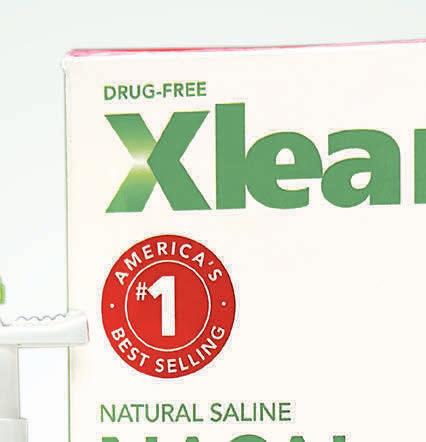











Probulin
Total Care Probiotic + Prebiotic + Postbiotic
Broad-spectrum support for digestive and immune function.*
Prebiotic + probiotic + postbiotic that supports total gut health.*
Supplies 15 clinically studied probiotic strains. Includes fermented fruit and vegetable blend.
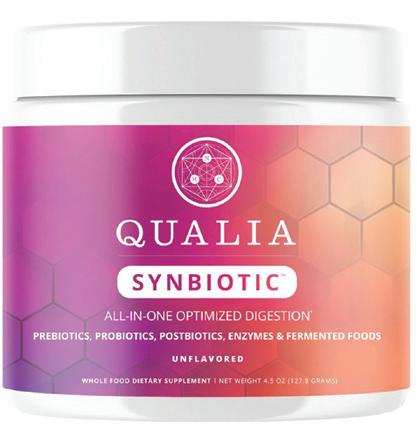
Qualia Synbiotic Powder
Optimize digestion and rebalance the gut ecosystem.*
Blend of prebiotics, probiotics, postbiotics, and fermented foods.
Formulated to support digestion, immune function, nutrient absorption, and key aspects of the gut-brain connection.*

Paragon PlusTM Stress-B 100 with Vitamin C
High potency B complex with vitamin C.
May provide support during times of stress.*
Continuous release formula for maximum absorption.

Dr. Praeger’s Perfect Burger
Plant-based burgers with a taste you’ll crave!
This soy free, certified vegan patty is made with veggie-forward ingredients.
Thick and juicy...cooks great on the grill.
Supplies 20g plant protein per patty.

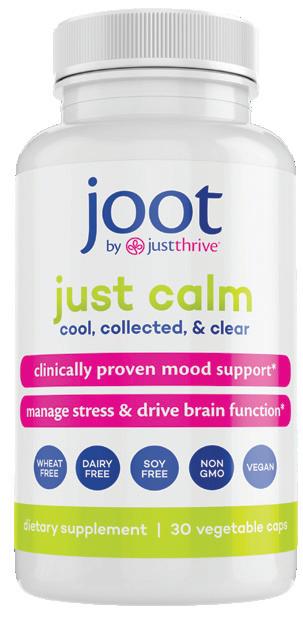
Om Mushroom
Master Blend Plant
Protein Unsweetened
Helps support energy, recovery, and stress relief.*
Supplies 21g plant protein per serving.
Includes 10 functional mushrooms + ashwagandha and B12.
Unsweetened, neutral flavor.
Just Thrive Just Calm
Feel cool, collected, clear.*
Clinically proven mood support.*
Manage stress and drive brain function.*
Combines 3 brain-nourishing B vitamins with a proprietary “psychobiotic” probiotic.

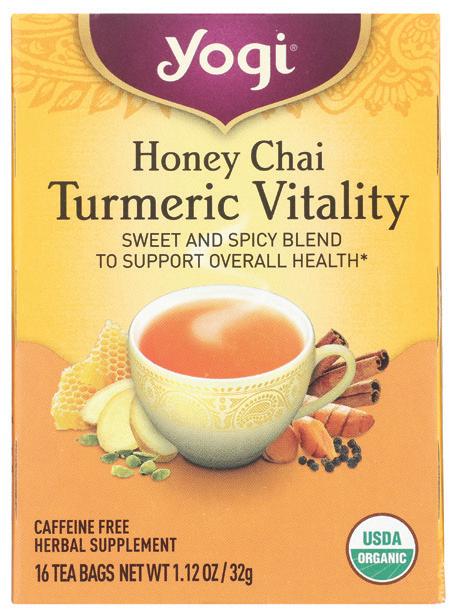
Choice Organics
Jasmine Green Tea
A perfect balance of green tea and elegant blossoms. Floral and fragrant. Certified organic. Moderate caffeine.
Yogi Tea Honey Chai
Turmeric Vitality Tea
Sweet and spicy blend to support overall health.*
Warming and soothing. Certified organic. Caffeine free herbal tea.






Akin's Chewable Vitamin C 500 mg
Supports the immune system.*
Supports collagen formation and capillary strength.*
With rose hips, acerola, and bioflavonoids.
Natural raspberry-cherry flavor.
*These statements have not been evaluated by the Food & Drug Administration. These products are not intended to diagnose, treat, cure, or prevent any disease. This information is presented as general information and is not meant to replace medical advice. Because persons and circumstances can vary, self treatment may not be right for you. Consult a qualified health care practitioner for advice pertaining to any particular person or case or before beginning any new exercise, diet, or supplementation program. Use products only per label direction.